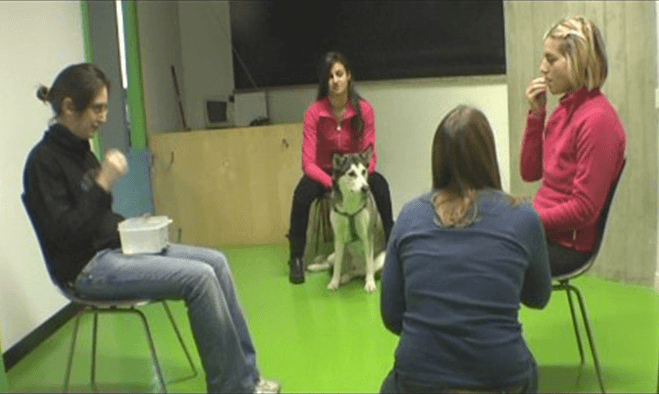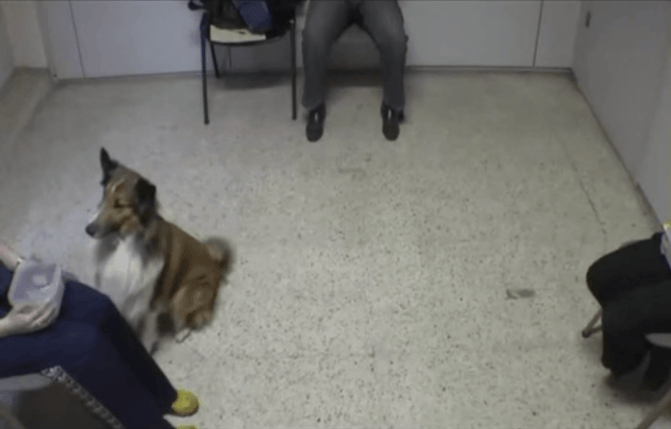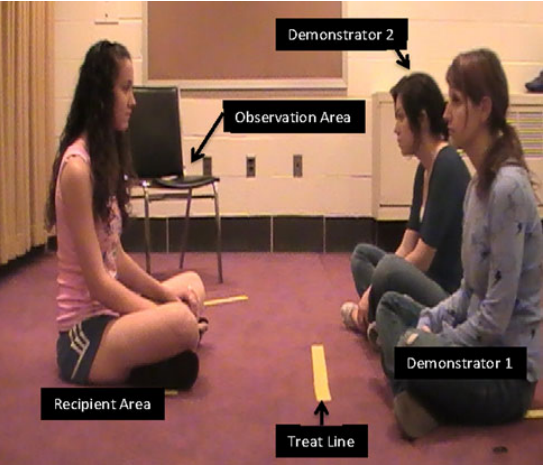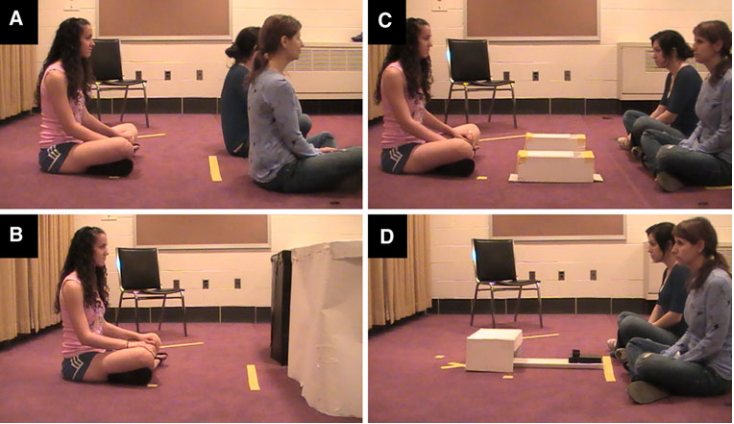You may want to start being nicer to people when there’s a dog in the room. Studies show that pups are observant enough to build preferences and know who is approachable, without directly interacting with them. That’s right. They’re paying attention, and they’re sizing you up every second you’re around.
The following three studies have tested this claim through controlled experiments, and the results are stunning!
1. Household dogs are all ears. Literally.
Question: Could dogs make the distinction between generous and selfish humans in the context of sharing food?
Human-animal interaction researchers at a dog cognition lab in Milan wanted to know if dogs were cool about people being stingy.


Experiment: In a small room, two strangers (to the pup) sat across from each other, each holding a bowl of tasty, tempting sausages. The pup and their owner sat to the side to observe the following interactions. A researcher playing the role of Beggar entered the room, approached both strangers, and was either granted a treat with a friendly “Have it”, or denied a treat with a stern “No!”
After watching several demonstrations, the pup was granted twenty seconds of free-roaming in the room. This experiment was conducted with 100 dogs.
Results: During testing, the dogs sought to avoid the person who behaved more brusquely with the Beggar. They also showed significant signs of interpreting the researcher’s voice cues rather than gestural communication. Meaning they may not know what we’re saying, but they’re definitely mindful of how we say things.
Watch the following two pups witness this interaction between three humans and then see who they choose to approach!
2. Dogs will form opinions about people they don’t know.
Question: Can dogs attribute reputation indirectly after observing interactions among strangers?
In other words, are dogs judging us?
Experiment: Performed in three rounds, a group of compliant and hungry (they had to fast for three hours prior to the experiments) pooches were presented with two strangers, a bowl of baked chicken treats, and a bowl of nothingness. One human played the role of Generous Stranger, while the other played the Selfish Stranger.


In the first round, both strangers were of the same gender. The Generous Stranger enthusiastically pointed the dog towards the bowl with the treats and encouraged it to eat them.


The Selfish Stranger pointed the dog towards the correct bowl as well, but in a neutral tone, and when the dog approached, the stranger took the bowl, ate the treats, and showed the dog the empty bowl. Harsh!


In the second round of the experiment, the strangers were of different genders to evaluate whether dogs would behave differently towards a human depending on his or her gender. In the third round, the strangers were still of different gender, but switched between the roles of Generous and Selfish.


Results: When dogs were free to approach the stranger of their choice, results showed that ten out of eleven dogs chose the Generous Stranger over the selfish one.
[bp_related_article]
When different genders were introduced, the dogs’ ability to discern between Generous and Selfish increased tenfold, meaning they had begun to associate selfishness and generosity with the gender of the stranger. An association that remained after the roles were reversed.
In other words, the dogs began to judge the strangers based on things with no direct connection to selfishness or generosity. They simply relied on the most noticeable cues.
3. Dogs assume stuff before they really know.
Question: Can dogs evidence reputation-like inferences for strangers through third-party interactions?
So are all dogs really just the ladies from Sex and the City, determining who’s who before they know what’s what?


Experiment: Similar to the previous experiments, dogs observed three demonstrators: a Treat Receiver, a Treat Giver, and a Treat Non-giver. The Non-giver forbade the Receiver from taking the treat, and the Giver granted it. None of the demonstrators made any kind of sounds.
When dogs stood in for the Treat Receiver, ten out of ten dogs approached the giving demonstrator in an attempt to receive treats. This experiment was then repeated with variables.
In Trial A, pictured below, the demonstrators were turned around. In Trial B, the demonstrators hid in big boxes. Trial C added small moving boxes to be the “recipient” of the treats. And in Trial D the human recipient was gone.
The giving demonstrator was chosen by eight out nine dogs in Trial A, nine out of ten in Trial B, and ten out of ten in Trial C. But in Trial D no significant number of dogs selected the Treat Giver.
Results: Most of the dogs were able to make the distinction and build a preference when observing and then approaching two un-familiar experimenters. The Treat Giver was almost always the first choice of any tested pup.
The studies have opened endless possibilities for future research on the testing and explanation of just how observant our best friends really are. Findings suggested that domestic dogs have the ability to act upon the reputations of strangers, an ability previously thought to be exclusive to humans.
Now if you ever feel like somebody’s watching you, you can be sure it’s happening.


Sources: Comportamento Animale, Messerli,
Science Direct, Phenix-Veterinaire











